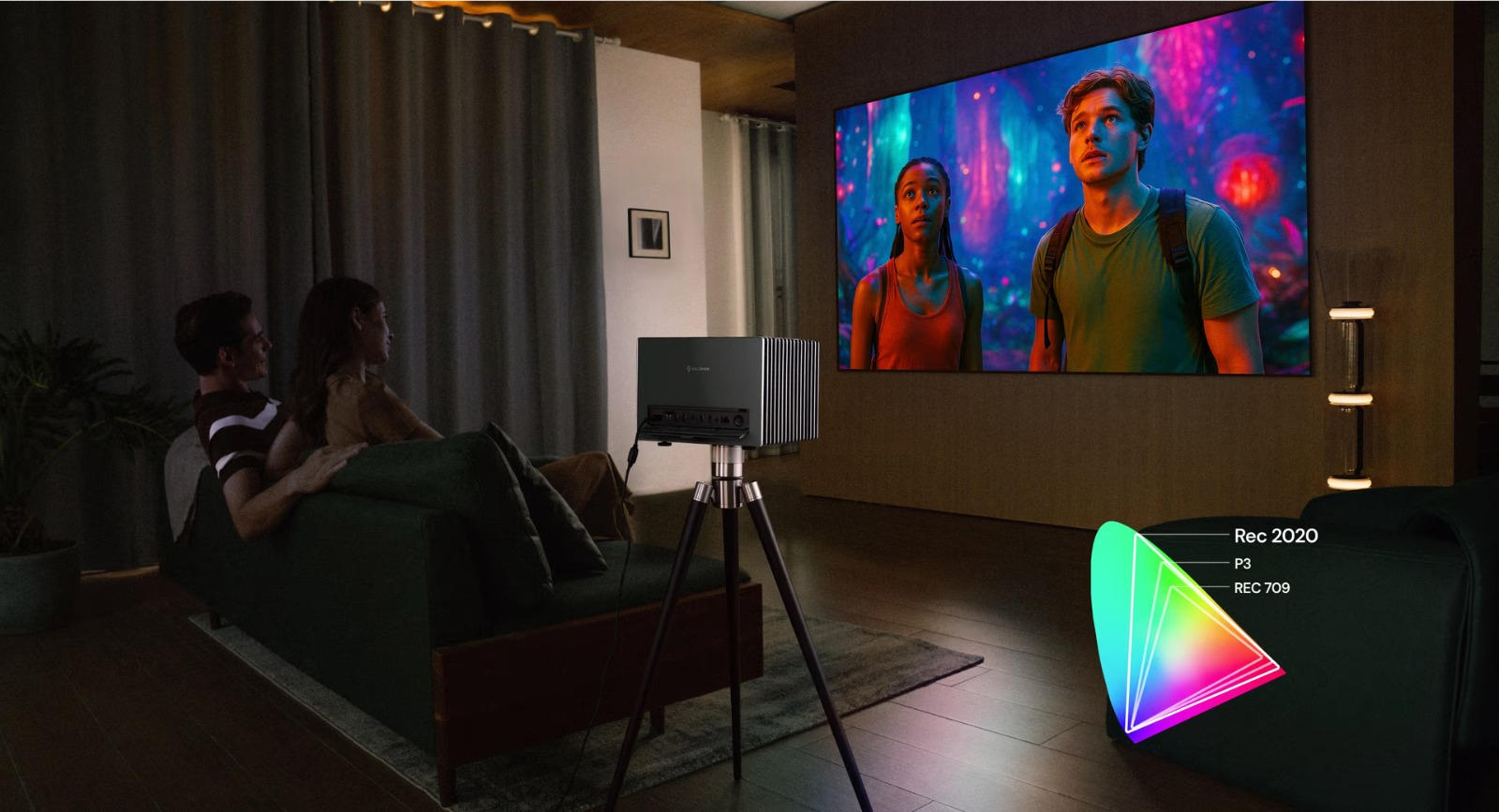What Is A Color Gamut? The Definitive Guide To Display Color Science
In the quest for the ultimate viewing experience—whether on a new television, a computer monitor, or a massive projector screen—terms like 4K, HDR, and contrast ratio dominate the conversation. However, one of the most fundamental yet least understood concepts governing image quality is the color gamut.
Simply put, the color gamut defines the entire range of colors a specific device is physically capable of reproducing. It is the color palette a display has access to. If a projector or TV can only produce a small gamut, then even the best source material will look dull or muted, as the device literally cannot display the vibrant shades captured by the camera. Understanding this concept is the key to unlocking truly accurate and saturated visuals.
This expert guide demystifies color gamut, explaining the standardized color spaces, why they matter for immersive projection, and how to evaluate a display’s color performance.
1. Defining The Concept Of Color Gamut
A color gamut is a geometric definition of the total spectrum of colors available within a color space. It is represented visually on the CIE 1931 chromaticity diagram , which is a horseshoe-shaped chart representing all colors visible to the average human eye.
Any display technology, whether it uses LEDs, OLEDs, or a projector light source, can only render a subset of those visible colors. The area enclosed by the triangle on the CIE diagram defines that device’s specific gamut. The larger the area of the triangle, the more colors the device can reproduce, resulting in richer saturation and more subtle color gradations.
The importance of a wide color gamut has never been higher, as modern content—from streaming services to next-generation video games—is mastered using far wider color palettes than standard legacy systems.
2. Understanding The Common Color Spaces
To ensure that content creators and display manufacturers speak the same color language, the industry has established several standardized color spaces. A display is often evaluated based on how closely its native gamut covers these standards.
sRGB / Rec. 709
This is the oldest and narrowest standardized color space, established for standard definition (SD) and high definition (HD) content.
- sRGB is primarily used for computer monitors and web content.
- Rec. 709 is the identical standard used for broadcast HDTV.
A display covering 100% of sRGB/Rec. 709 is considered standard but insufficient for modern cinema or HDR content.
DCI-P3
This standard was developed by Digital Cinema Initiatives (DCI) for commercial movie theaters. It is significantly wider than sRGB/Rec. 709, covering about 25% more color space. It is the current de facto standard for mastering 4K movies and modern HDR content. Any premium viewing device, including a 4K home theater projector, should aim to cover at least 90% of the DCI-P3 gamut.
Rec. 2020
The widest standard currently used, Rec. 2020 (or BT.2020) defines the color space for Ultra HD (UHD) resolutions and is the target for the future of display technology. It encompasses a massive range of colors, far exceeding what current consumer display technology can natively achieve. While no projector or TV can hit 100% of Rec. 2020, devices that cover 80% or more are considered true flagship, wide-gamut performers.
3. The Practical Impact On Display Performance
The size of the color gamut directly affects how faithfully a display can render the intended visual experience, particularly when dealing with High Dynamic Range (HDR) content. HDR sources (like HDR10 or Dolby Vision) require both high brightness and wide color capability to work correctly.
A display that is technically bright but has a small sRGB-only gamut cannot realize the full potential of an HDR signal. Colors will appear desaturated, failing to deliver the intense reds, deep greens, and vibrant blues intended by the filmmaker.
The Role In A 4K Home Theater Projector
For a serious 4K home theater projector, supporting a wide color gamut (DCI-P3 minimum) is mandatory because it is projecting onto a large surface, making color inaccuracies more visible. Projectors achieve this wide gamut in a few key ways:
- Laser Phosphor Light Sources: Laser light sources often naturally produce monochromatic light, making it easier to target and hit specific colors accurately, resulting in wider gamut coverage than traditional lamps.
- Color Wheels and Filters: Projectors may use specialized color wheels or internal filters to refine the light spectrum and align output with the DCI-P3 standard.
The Color Demands Of A 4K Gaming Projector
When evaluating a 4K gaming projector, color gamut impacts not just visual fidelity but the overall immersion of the game world. Modern games use wide color spaces to create hyper-realistic environments.
Crucially, some gaming units prioritize low input lag and high refresh rates over perfect color fidelity. While a narrower sRGB gamut might suffice for competitive multiplayer (where speed matters most), a true AAA cinematic single-player experience demands DCI-P3 coverage. A top-tier unit should offer a dedicated “Game Mode” that maintains low input lag while still aiming for the widest possible color palette.
4. Measurement Metrics: Coverage Versus Volume
When manufacturers market color capabilities, they often use two terms interchangeably: coverage and volume. However, they describe different things:
- Coverage: This refers to the percentage of the target color space (e.g., DCI-P3) that the display’s gamut physically covers on the 2D CIE chart. A high percentage (95% coverage) means the projector can reproduce almost all of the standardized colors.
- Volume: This is a 3D measurement that incorporates the brightness (luminance) of those colors. Two displays might have 100% DCI-P3 coverage, but the one with higher color volume can reproduce those colors more intensely at higher brightness levels, which is crucial for delivering impactful HDR.
For consumers, high coverage is the baseline requirement, while high volume is what delivers the eye-popping visual intensity, especially on devices designed for high-brightness viewing.
Conclusion: Making The Gamut A Priority
The color gamut is not just a technical specification; it is the boundary of your display’s artistic potential. When shopping for any premium screen, always prioritize devices that clearly state their support for the DCI-P3 color space. A wide gamut, combined with high contrast and peak brightness, ensures that your content—from blockbuster movies to the latest video games—is rendered exactly as the creator intended, delivering a truly vibrant and unforgettable viewing experience.







